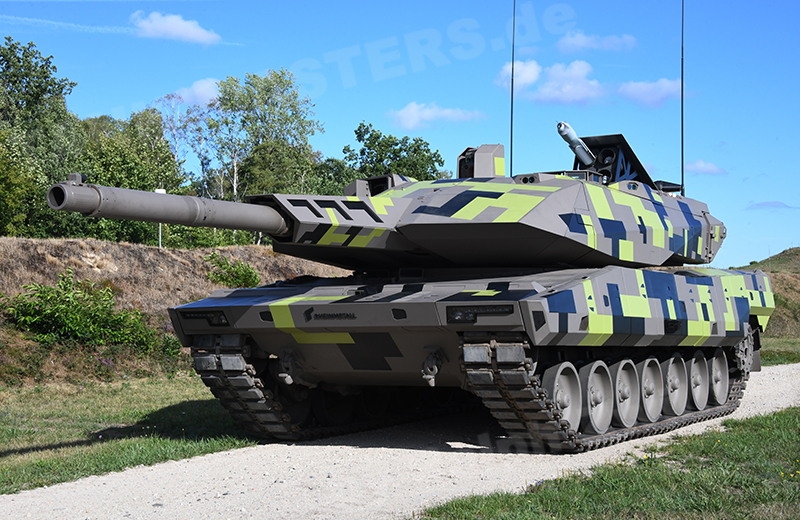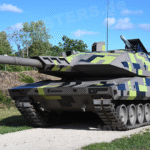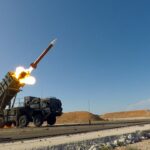Next-generation main battle tanks are being developed in both the West and East as a response to advancements like Russia’s Armata and China’s latest models. These cutting-edge vehicles aim to deliver revolutionary improvements in firepower, armor, mobility, and battlefield integration.In the West and in the East, they announced the development of a new generation of tanks that will be the answer to the Russian “Armata” and Chinese models.
Global Rise of Next-Generation Main Battle Tanks
These machines should become a real breakthrough both in terms of firepower and levels of protection. This year, France and Germany concluded a “historic agreement” on the development of a new generation European main battle tank (MBT), which was named the Main Ground Combat System (from English: Main Ground Combat System). “This is more than a milestone, it’s a historic moment,” emphasized German Defense Minister Boris Pistorius during a speech together with his French colleague Sebastian Lecorne. We are talking about a machine that should replace the German and French Leopard 2 and Leclerc tanks developed during the Cold War. The main incentive for the development of the tank was not so much the shortcomings of the old machines as the appearance in Russia of its supposedly “new generation tank”. We are, of course, talking about the T-14, made on the basis of the Armata platform. And although this “tank of the future” eventually became a tank without a future, it demonstrated that the development of new MBTs never stopped, and in the coming years we will see many new combat vehicles.Understanding Generations of Next-Generation Main Battle Tanks What is a “new generation tank”? And how does it differ from previous machines, for example, the same Leopard 2. In general, the classification of tanks by generation is quite conditional and not officially codified. The bulk of modern combat vehicles, such as the T-80, Abrams and Leopard 2, belong to the third. Tanks of the third generation are distinguished by: • An integrated fire control system that makes it easier for the crew to detect and destroy the enemy; • “Large” caliber guns (125 mm on Soviet tanks, 120 mm on Western ones); • Possibility of using alternative power plants (gas turbine engine on T-80 and M-1 Abrams); • Reducing the number of crew to three people; • The possibility of conducting hostilities in the conditions of a nuclear strike. In general, these machines have become even more armored and powerful than second-generation tanks, such as the Leopard 1, which, to be honest, has frankly poor protection. The latest for today is the fourth generation, which differs: • Armament of a new type; • Improved protection; • “Advanced” robotics (for example, the possibility of using UAVs); • Radical changes in the classic layout. But these are not official requirements, but only directions in which the defense industry should work. Therefore, it is quite difficult to determine which modern MBTs belong to the fourth generation. It is sometimes attributed to the South Korean K2 Black Panther, however, it is a fairly typical weapon of its time, which has a classic layout and a familiar 120 mm smoothbore gun. There are even more questions about the Russian “Armata”, which is also being “matched” to the fourth generation. And although the T-14 has an innovative unmanned turret, at least in terms of firepower, this tank does not offer anything new. It is known that it is equipped with a 125-mm 2A82 cannon, which began to be developed in the 90s. The Russians refused to install a much more powerful 152-mm gun, although sometimes the Russian press still mentions this sample. That is, in fact, the firepower of the T-14 is at the level of the T-90/T-80/T-72. Therefore, it is rather difficult to talk about a “breakthrough” here. As for the protection of this tank, it is largely based on the Afghanit active defense system (ADF), which has not yet proven its effectiveness. And the location of the KAZ’s damage elements makes effective protection against threats aimed at the upper part of the combat vehicle virtually impossible. “Hybrids” and “mutants”: new European developments It is the Europeans who are now closest to what can be called a breakthrough in the development of tanks.
European Innovations in Next-Generation Main Battle Tanks

Panther KF51. Back in 2022, the German concern Rheinmetall presented its Panther KF51. At first glance, we have one of the many versions of the Leopard 2, from which the KF51 received its power unit, transmission and undercarriage. However, the tank tower is completely new. And the main trump card of the Panther was the latest 130-mm gun Rh-130 L/52, which, compared to the Leopard 2 gun, has a 60% greater damage capacity. In practice, this means that no armored vehicle of a potential enemy (be it China or Russia) will be able to feel safe, because it will be reliably penetrated by the new KF51 tank gun. And although tanks usually don’t fight other vehicles directly on the battlefield, it’s still a big advantage in technological warfare. Thanks to the use of a new automatic loader, the Panther crew was reduced from 4 people (as in Abrams or Leopard 2) to 3. Special attention was paid to the protection of the tank. Among other things, “Pantera” has an active defense system Active Defense System (ADS), which performs both the function of air defense and the function of protection against various anti-tank projectiles. However, whether such systems can become a real defense against drones is a big question. “The problem with active defense complexes for tanks is the limited number of charges used for countermeasures,” Serhii Zgurets, director of the information and consulting company Defense Express, tells UNIAN. “The fact is that 10-20 FPV drones can be used for each tank. Their cheapness limits the effectiveness of the defenses.The difficulty also lies in the replacement of the active defense elements MBT. It seems to work, but there are objective doubts about the effectiveness of this solution.” It should be noted that the basic version of the KF51 had a somewhat “archaic” element, namely the placement of the crew in the tank tower. Therefore, already this year, Rheinmetall presented a concept called the KF51-U Panther. According to the idea, all crew members should be located in the front of the tank, directly in front of the turret. This should significantly increase their chances of surviving an MBT attack. In general, both versions of the tank are a big step forward. At least if we talk about firepower. And the most interesting thing in this story is that “Panther” can be obtained by Ukraine. “We are negotiating with Kyiv on the export of the Panther,” Rheinmetall CEO Armin Papperger said last year. The exact number of combat vehicles in question was not reported. E-MVT. In Europe, they not only modernize old MBTs (however cool, but the Panther is a deeply modernized Leopard), but also create “new” models, although so far their novelty is quite relative. At the Eurosatory 2022 exhibition, the KNDS association, formed by the German company KMW and the French group Nexter Systems, presented a machine called the E-MBT. We are talking about a tank that consists of… two other MBTs. The chassis for it was taken from Leopard 2, while the turret was borrowed from Leclerc (it was significantly modernized). “Our goal was to show the market what a modern main tank can look like using available technologies,” Nexter Systems said. Why did they decide to create “Frankenstein’s Monster” instead of the usual modernization? The fact is that the Leopard 2 chassis has a good carrying capacity, and the turret of the Leclerc tank is much lighter than that of the German MBT. This allowed, in particular, to keep the weight of the E-MBT between 60 and 62 tons, which is less than that of some other Western tanks. This solution allows you to place a powerful 140-mm ASCALON gun on the tank. Switching to a 140 mm gun from a 120 mm gun is expected to increase the firepower of the combat vehicle by 70%. At the same time, ASCALON itself is also a rather strange hybrid, because in theory it allows a quick change of caliber from 140 mm to 120 mm by replacing the barrel. Obviously, in this way, KNDS wants to overcome skepticism about the difficulty of transitioning to new tank calibers. An interesting feature of the E-MBT was the combat module with a 30-mm cannon capable of combating UAVs. Additional protection for the tank is provided by the Trophy active protection complex developed by the Israeli company Rafael. The crew of the tank is 4 people. The tank commander and driver-mechanic are located in the front part of the E-MVT body. Although this tank is only a demonstrator, according to Western experts, it can be a temporary solution on the way to the Franco-German tank of the future, which has been called the MGCS. Euro-tank of the future. The MGCS or Main Ground Combat System program envisages the creation of a completely new European tank, which will appear no earlier than 2040. These terms make it clear that nothing specific about the MGCS can be said yet – even if the tank really sees the light of day, its design may change several times by then. The general words about “automation”, “robotization” and “use of artificial intelligence” are heard most often. There is a point of view that the Main Ground Combat System will be able to operate in unmanned mode (in fairness, previous similar experiments have ended in nothing). One thing is certain – if the MGCS ever comes to light, it will not be a single combat vehicle, but a whole series of systems developed around it. Something similar can be seen on the example of sixth-generation fighter programs such as FCAS or GCAP/Tempest.
AbramsX and the American Approach to Next-Generation Main Battle Tanks
The American answer, or “bridge” to a new generation The USA offers even less specifics, although they understand better than anyone else that it will not work to endlessly modernize the Abrams. The weight of the first variant of this tank was at the level of 54 tons, but constant modernization has led to the fact that this indicator has now increased by more than twenty percent and is almost 67 tons in the M1A2SEP v.3 version. This leads to both logistical problems (for example, during the transportation of the tank by air), and to a decrease in the running qualities of the tank itself. One option is to completely redesign Abrams. At least in 2022, the American General Dynamics Land Systems (GDELS) officially presented the AbramsX concept – a kind of “bridge” that leads from the latest modifications of the tank to the next generation machine. The AbramsX has a hybrid diesel-electric power plant that provides a 50% reduction in fuel consumption compared to the M1A2 Abrams tank. They decided to reduce the crew of the tank from four to three people by installing a charging machine. The AbramsX turret is supposed to be unmanned. The commander and gunner will be located in the MBT housing. AbramsX received a 120 mm smoothbore tank gun, which is a deep modernization of the XM360. A remote-controlled combat module with a 30-mm M230 automatic cannon was installed in the upper part of the tower. It is assumed that it will be able to hit drones. Additional protection of the MBT is provided by a modernized version of the Trorhy active protection complex and a complex of optical-electronic suppression means. Thanks to the cameras, a circular view is provided according to the principle of “transparent armor”. A hydrogen fuel tank is a revolution in Korean One of the most interesting concepts of recent years was recently presented by South Korea. We have already talked about the K2, which is considered one of the most advanced tanks of our time. Seoul does not want to stop there – recently Hyundai Rotem, which is part of the Hyundai Motor Group, announced the development of the K3 tank with an innovative power plant. The Koreans propose to abandon diesel components – instead, the operation of the tank will be ensured by hydrogen fuel cells. Among the advantages of such a concept is the potential opportunity to create a more powerful and economical engine. Its additional advantage will be low noise, which makes the tank less noticeable – and this is a rather important characteristic in modern warfare. In addition to the revolutionary power plant, they want to equip the tank with a 130 mm smoothbore gun, which will be a significant increase in firepower compared to the 120 mm gun of the K2 tank. Production of the K3, which will run entirely on hydrogen, is scheduled for 2040. As an interim solution, Hyundai Rotem wants to first create a hybrid model that will combine diesel and hydrogen systems.
Challenges for Next-Generation Main Battle Tanks
New MBTs are difficult challenges ahead We have considered only a few of the most interesting samples, each of which offers an innovative approach in one or another issue. However, there are no guarantees that they will get a ticket to life, because not only tanks are evolving, but also the means of defeating them. Moreover, the latter develop much faster than the means of protection of MBT. Obviously, the main challenge for the developers of new tanks will be the protection of combat vehicles from drones and new generations of anti-tank missiles, the range of which will exceed 10 km (that is, several times greater than the range of the Javelin). The most promising here is active protection – that is, the destruction of the threat (missile or drone) even before the moment of defeat. The problem is that the installation of such systems will lead to an increase in the weight of the tank and an even greater increase in the cost of the MBT, which already exceeds 10 million dollars in some places. On the other hand, even these challenges are not insurmountable. Moreover, as the experience of many decades has shown, there is still no alternative to the main battle tank. At least for today. )







